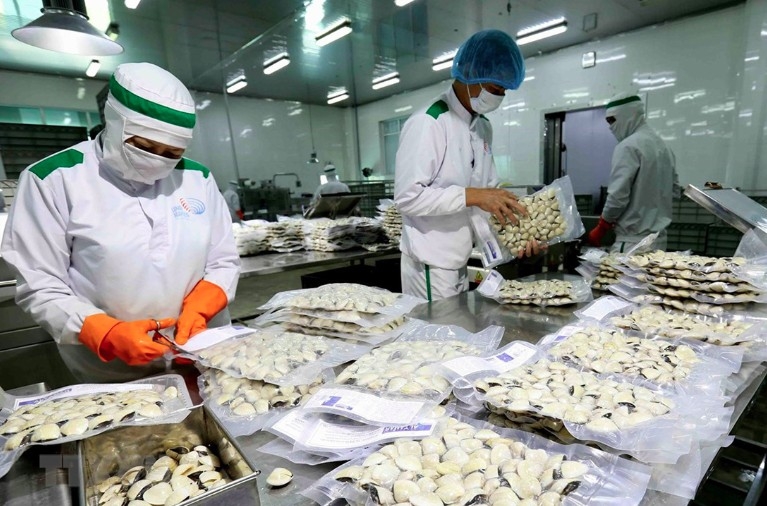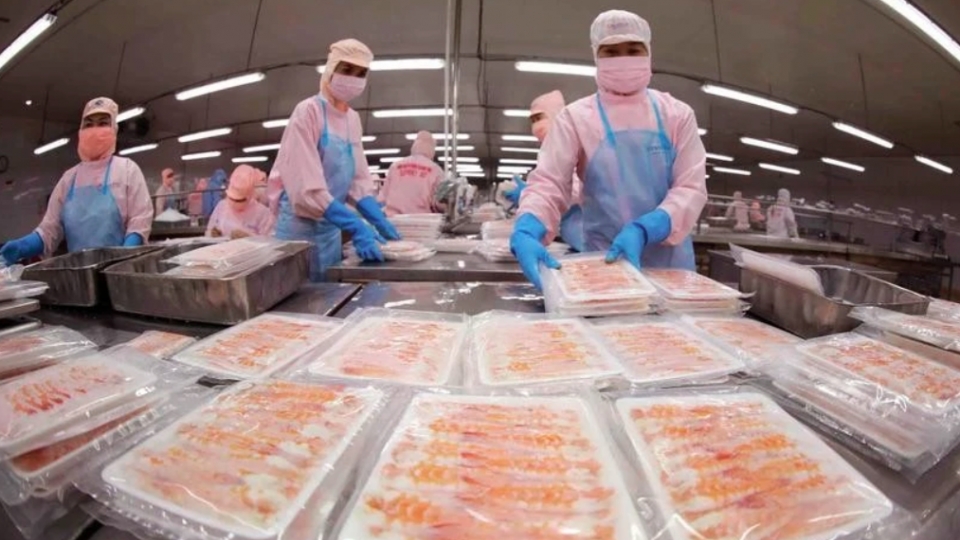China emerges as leading importer of Vietnamese shellfish
VOV.VN - Vietnamese shellfish exports surged by 109% to US$63 million in value in the first quarter of the year, with exports to the Chinese and Hong Kong markets skyrocketing by nearly 2,000% to over US$23 million, reported the Vietnam Association of Seafood Exporters and Producers (VASEP).
The country’s shellfish exports to China and Hong Kong (China) only accounted for 4% in the first quarter of 2024 but jumped to 37% in the first quarter this year.
This figure far exceeded other important markets such as the European Union with turnover reaching US$18 million, as well as the United States at more than US$6 million.
Insiders point out that amid the traditional EU market moving to decrease imports due to tough competition and stricter regulations, China has emerged as a strategic market.
Along with the large consumption scale, the market is also more flexible in import standards and boasts a diverse consumption system from supermarkets to wholesale markets.
Currently, the northern neighbour imports the most types of snails, clams, and scallops, of which live snails dominate the market with turnover hitting nearly US$16 million, followed by live clams at nearly US$5 million and frozen scallops at roughly US$3 million.
The import structure indicates that Chinese consumers increasingly favour high-quality fresh and frozen products, which holds advantages for Vietnamese mollusk production and processing enterprises in the time ahead.
In particular, the recent official visit to Vietnam by Chinese President Xi Jinping in April has given fresh impetus to bilateral trade relations.
Accordingly, the two sides pledged to strengthen cooperation in the field of agricultural and aquatic products, to facilitate customs clearance procedures, and to give the green light to fresh Vietnamese products to enter this market, thereby helping to shorten logistics time and costs.
To make the most of this opportunity, Vietnamese enterprises are required to further improve product quality and invest in both post-harvest preservation and a clear traceability system, alongside ensuring standardisation of farming and quarantine.
Moreover, they need to strengthen connectivity with logistics systems and border trade hubs to optimise costs and transportation times.
Most notably, the utilisation of new policies agreed upon after the recent high-level visit will also serve to help Vietnamese businesses gain greater advantages in terms of price negotiations and to expand market share in the potential market.




